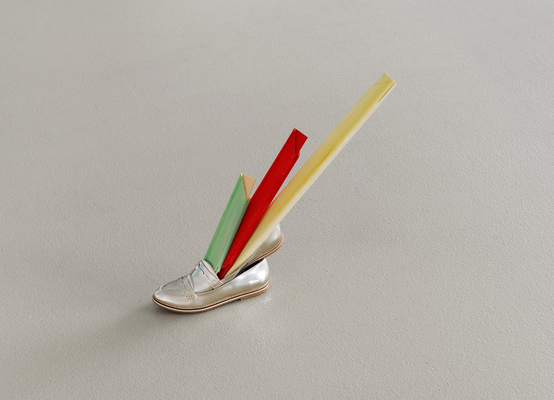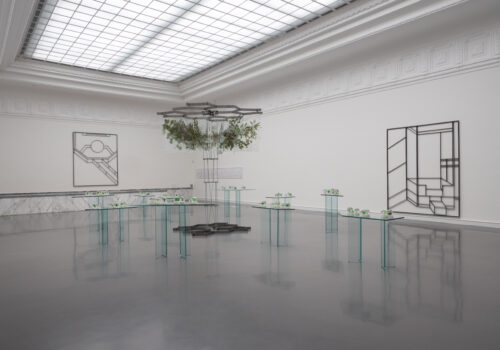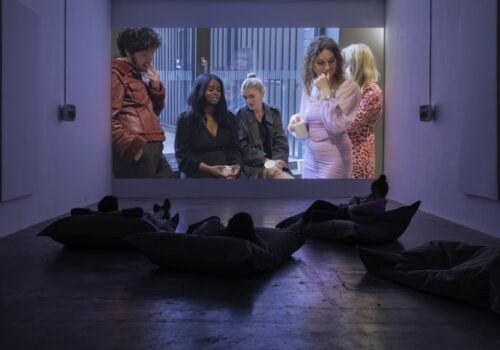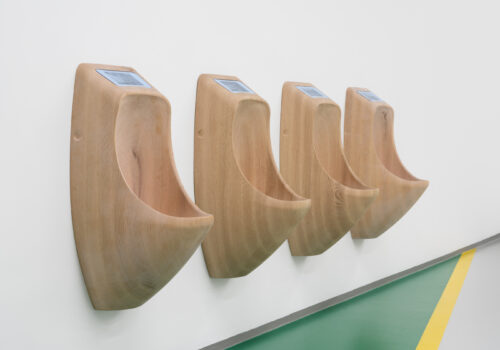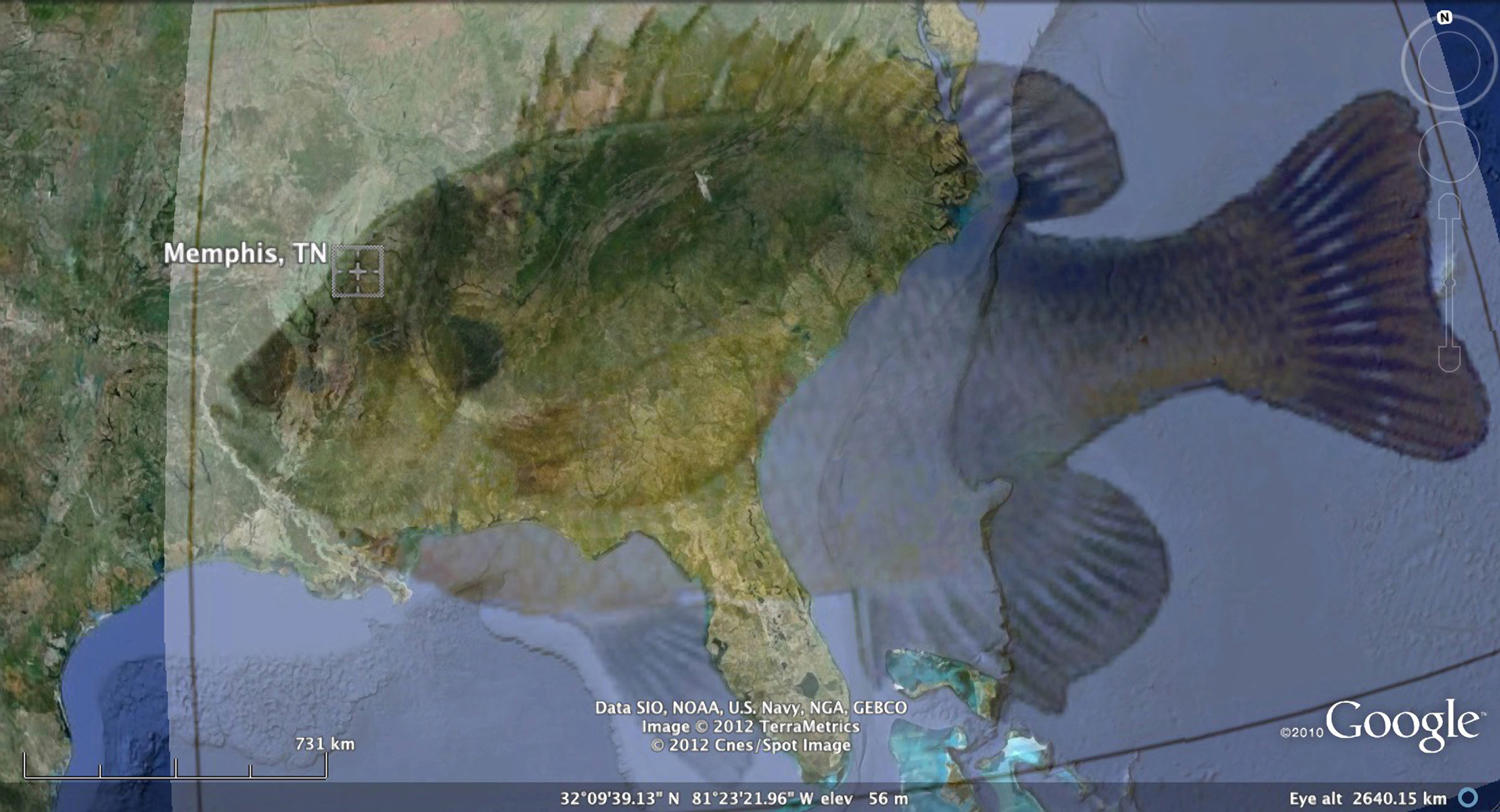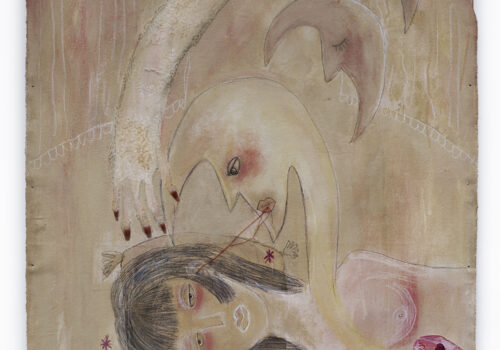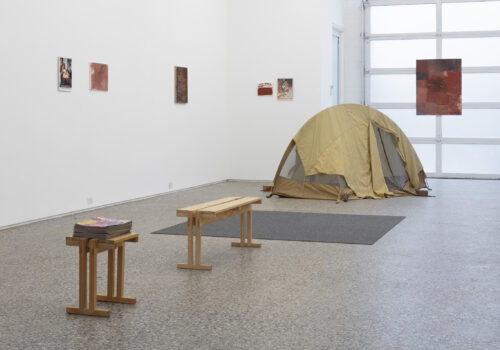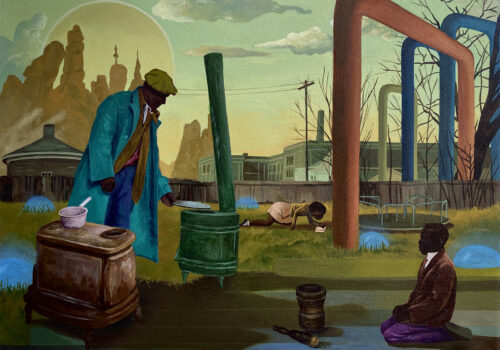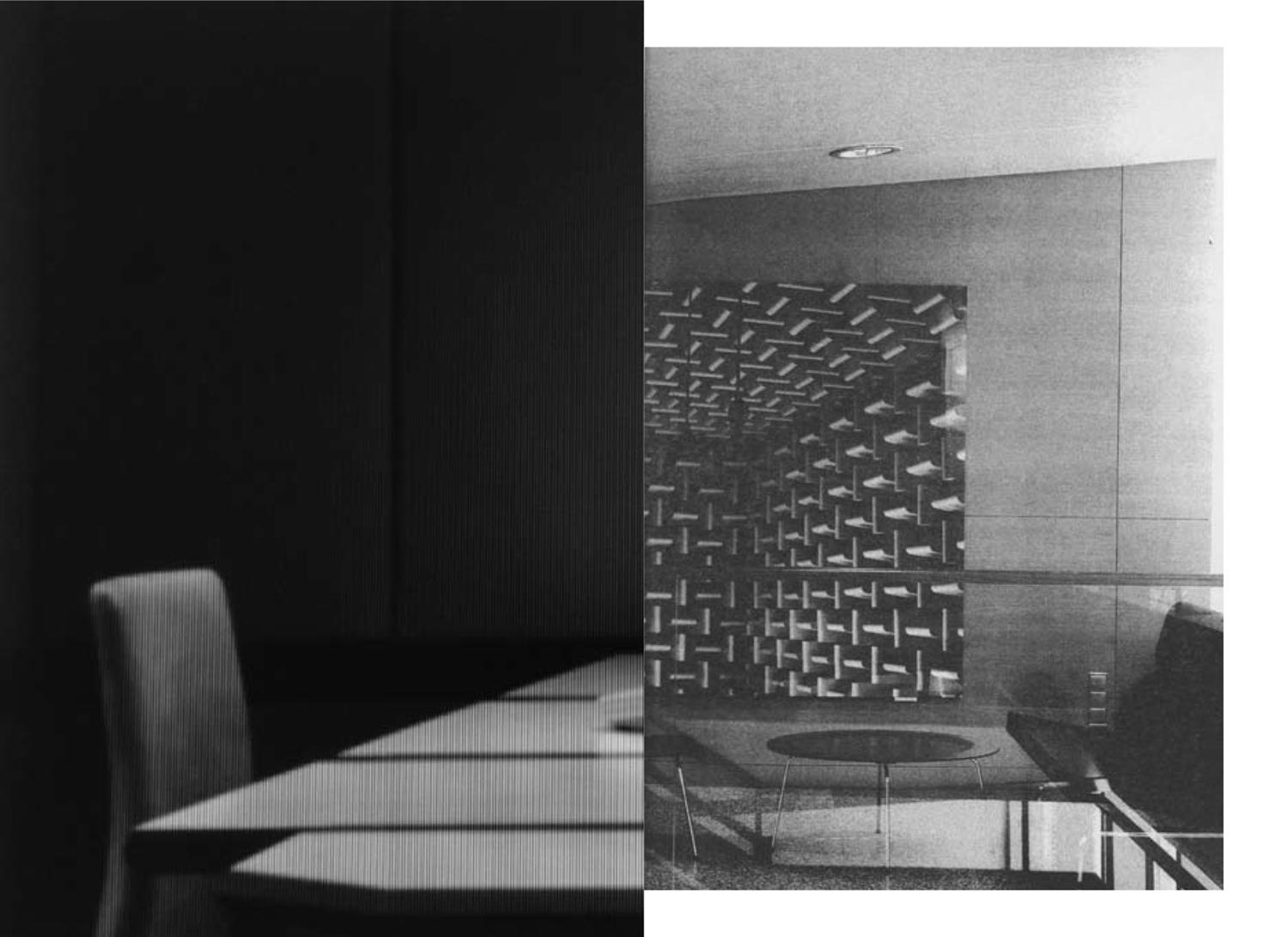Past Residents
Past Resident2016: KdFS Kulturstiftung des Freistaates Sachsen
Franz Jyrch
In Franz Jyrch’s installations and sculptural settings, canvases and stretcher frames play a significant role. The basic approach to her work, which is characterized by coincidence and calculation alike, consists of arranging and deconstructing very diverse materials taken from artistic contexts and everyday life as well. Thereby, she creates complex sculptures and installations which can fill entire rooms. It leaves us with the impression that painting has emancipated itself from its central coordinates, with its ‘assistants’ conquering new spaces beyond the narrow square of the frame. Instead, the exhibit space now provides the actual framework for a much more complex pictorial narrative, one that integrates many things that are outside of the art context. (Text by Ralf F. Hartmann)
Franz Jyrch graduated from the Academy of Visual Arts Leipzig in 2012. She received the Marion Ermer Award and completed her postgraduate studies in 2014. Solo shows include BONHEUR, Vincenz Sala, Paris; PARAVENT, Galerie EIGEN+ART Leipzig; KNICKE AND ORDER, Gallery of the Academy of Visual Arts Leipzig; and La Pittura, Vincenz Sala, Berlin. Recent group shows include Plain Walls, White Teeth, Galerie Genscher, Hamburg; Yearzero, Kollektiv Unkonventionelle Kunst, Zurich; Mulhouse 015, Biennale d‘Art Contemporain, Mulhouse; WERKSCHAU, Spinnerei Galleries, Leipzig; A Room of One’s Own, Kunstverein Tiergarten, Berlin; and Sammlungsalphabet, Museum of Contemporary Art Leipzig.
Residents from Germany
Past Resident2015: National Endowment for the Arts
Aviva Rahmani
Ecological artist Aviva Rahmani’s projects range from site-specific installations and complete landscape restorations, to museum venues that reference paint, sound and photography. Considered a seminal figure in ecological art, Rahmani’s work in Maine restored coastal wetlands systems and led to the development of her original theory about bio-regional sustainability, “Trigger Point Theory as Aesthetic Activism.” Rahmani creates trans-disciplinary artifacts from collaborative research to address environmental degradation.
Aviva Rahmani practice continues to return to and be influence by some of her earlier collaborative works including a ten-year performance that effected ecological restoration as art, Ghost Nets, 1990-2015. Blue Rocks, 2002, which resulted in the restoration of 26 wetlands acres and an investment of $500,000.00 from the USDA. New scientific knowledge was produced alongside Fish Story Project, 2013, which led to the realization that re-greening the earth by 36% by 2030 could mitigate climate change. Her current project, Blued Trees, which spans intercontinental space, is conceived as a five-movement symphony as a sculptural installation in the path of fossil fuel infrastructure. Aviva Rahmani is an affiliate at the Institute for Arctic and Alpine Research, the University of Colorado Boulder, and a PhD candidate at the University of Plymouth, Plymouth, United Kingdom. Rahmani has published internationally and has been the recipient of numerous grants including a 2009 Arts and Healing Award for work on water.
Events & Exhibitions
Blued Trees for Aqueous Earth
December 15, 2015
Residents from United States
Past Resident2016: Senate Department for Culture and Europe, Berlin
Aleksander Komarov
Much of Aleksander Komarov’s film work are edited as essays concerning the economic, political, and social conditions that have enabled his nomadic lifestyle- a hallmark of globalized artist-hood. Through film Komarov explores the recording and production of imagery as a political activity, were images therefore appear as co-producers of social conditions. In each work, the spectator is situated within a timeline, on the premise of deconstructing a conclusive documentary statement and instead offering up multiple possible routes towards meaning. As a person entangled in multiple political systems, he exposes the contemporary identity politics as a regulation mechanism of post-industrial exploitation and question whether the art itself now takes over the old assignment of rationalization and standardization.
Aleksander Komarov was born and raised in Belarus, trained as an artist in Glebov Art Leceum in Minsk, Belarus; the University of Fine Arts Poznan, Poland; and Rijksakademie, The Netherlands. He published filmic and written essays concerning questions of migrating identity’s, (cultural) globalization, the condition of contemporary art and its relation to broader economic contexts. His films include Estate (2008); Capital (2009), Glosy/Voices (2011), Palipaduazennje (2012), Language Lessons (2013). Komarov is also co-founder of Air Berlin Alexanderplatz, a research-related residency program in Berlin. His films were exhibited most recently at the Moscow Biennial (2015); Arsenal Gallery, Poland (2014) and The Way of the Shovel, curated by Dieter Roelstraete at the Museum of Contemporary Art, Chicago, 2013.
Events & Exhibitions
Salon: Tony Albert and Aleksander Komarov
November 24, 2015
